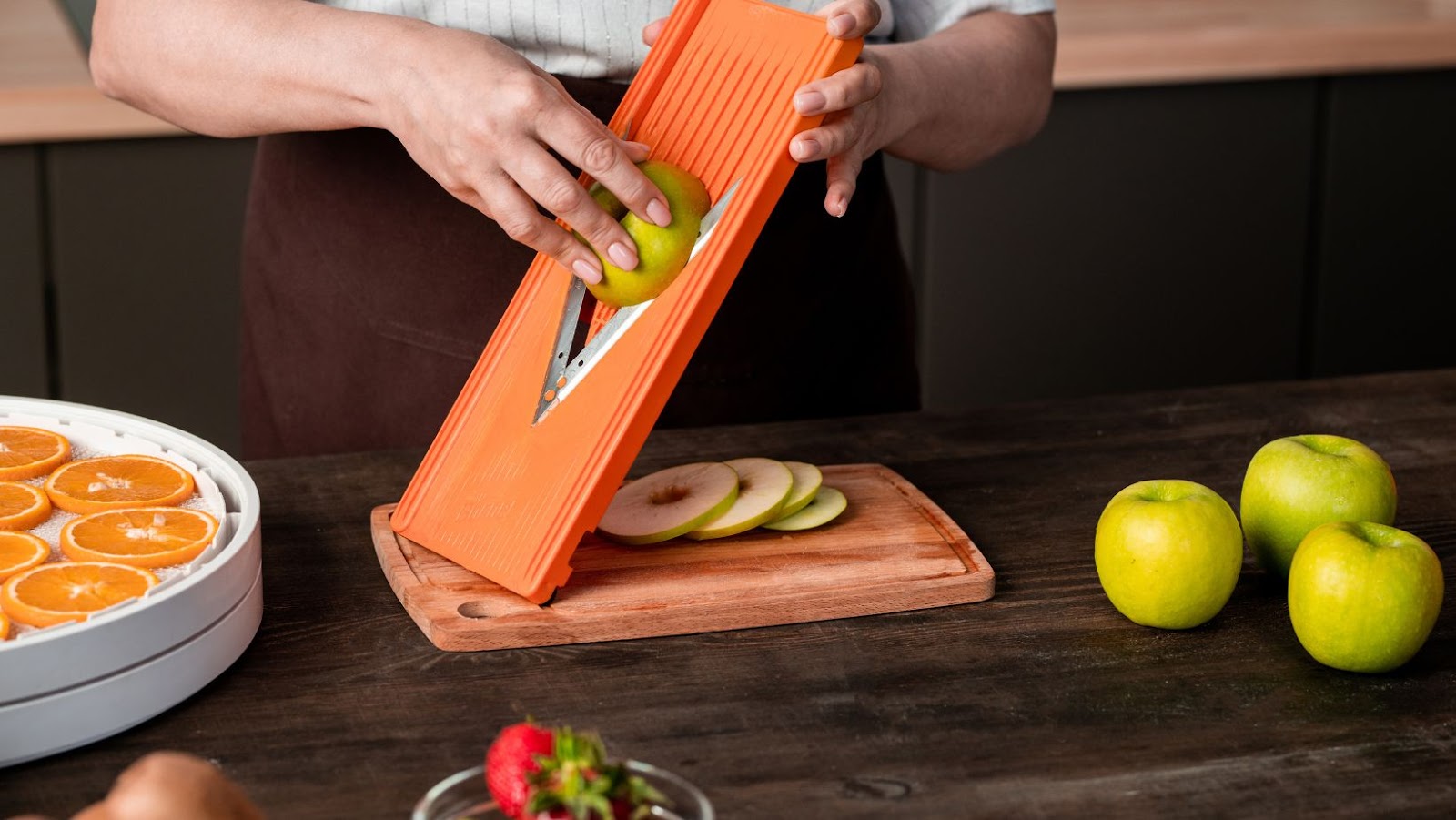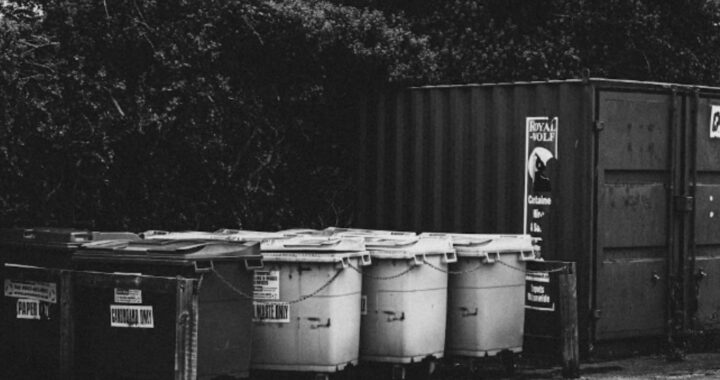
Tips For Using A Salad Spinner
Salad spinners are kitchen tools that are used to dry salad greens efficiently. They typically consist of a perforated bowl, a built-in strainer, and a lid with a spinning mechanism. By spinning the greens inside the bowl, excess water is removed from the leaves resulting in dryer salads. Let’s explore further details about how these tools work and what benefits they offer.
Understanding Salad Spinners | Table:
| Function | Benefits |
| Efficient water removal | Preserves freshness |
| Easy to use | Saves time and effort |
| Compact design | Space-saving storage |
| Durable materials | Long-lasting performance |
In addition to their primary function of effectively drying greens, salad spinners have numerous benefits for home cooks. With their easy-to-use designs, it saves significant time and energy over manually patting down greens with paper towels. Additionally, salad spinners help preserve the freshness of leafy greens by removing excess moisture that can cause wilting, browning or spoiling.
Pro Tip: If you want to maximize your salad spinner’s drying potential, add some ice-cold water in the bowl along with washed lettuce leaves before spinning them dry – this will shock the leaves & make them crispier!
Choosing a salad spinner is like choosing a life partner: it needs to be sturdy, reliable, and able to handle your greens without leaving you high and dry.
What is a Salad Spinner
To choose the right salad spinner for your needs, you’ll want to consider a few key factors. When it comes to size, the capacity of the salad spinner will determine how much salad you can dry at once. Material quality is also an important consideration, as you’ll want to choose between plastic and stainless steel based on the durability and ease of use. Finally, locking mechanisms play a crucial role in determining how easy the spinner is to use and manipulate.
Size Matters: Capacity of Salad Spinner
When selecting a salad spinner, it’s important to consider its capacity to handle the amount of greens you need to wash. The size of a salad spinner can make all the difference in this regard. Here are some factors to keep in mind while choosing the perfect sized salad spinner for your needs.
To present these factors properly, we have created a table illustrating different sizes and capacities of salad spinners available on the market. The table categorizes several models based on their capacity from small (2-3 quarts), medium (4-5 quarts), and large (6-7 quarts).
Size Matters: Capacity of Salad Spinner
| Size | Capacity | Features |
| Small | 2-3 quarts | Best suited for single servings or handling small quantities of greens. Perfect for small kitchens and individuals who regularly eat salads as part of their diet. |
| Medium | 4-5 quarts | A versatile option that can handle moderate amounts of produce at once, making it ideal for families or small gathering events. |
| Large | 6-7 quarts | Designed to handle heavy loads effortlessly, making it an excellent option for commercial kitchens or larger gatherings/events. |
It’s essential to take note that bigger is not always better when it comes to salad spinners. Choosing an appropriate-size spinner will enable you to avoid wasting greens by overfilling the basket.
Interestingly, Salad Spinners were first invented in 1974 by social entrepreneur J.Camille Bechet in France. His invention has been regarded as a crucial kitchen equipment that has significantly helped in making our daily lives healthier and more comfortable while also preventing food waste.
Plastic or stainless steel? Just remember, your salad spinner might break but your heart doesn’t have to.
Material Quality: Plastic vs Stainless Steel
When selecting a salad spinner, considering the material is crucial. There are different materials available in the market, including plastic and stainless steel.
| Material | Durability | Cost |
| Plastic | Less Durable | Affordable |
| Stainless Steel | Highly Durable | Expensive |
Plastic spinners tend to be less durable but are more affordable than their stainless steel counterparts. On the other hand, stainless steel models offer high durability but come with a higher price tag.
If you prefer a more eco-friendly option, some companies offer salad spinners made from sustainable and biodegradable materials like bamboo.
Pro Tip: To ensure longevity, select a salad spinner made from quality materials to avoid any future breakage or damage.
Lock in your love for salad prep with these easy-to-use locking mechanisms.
Easy to Use: Locking Mechanisms
To select the appropriate salad spinner, it is crucial to understand its locking mechanisms. Ensuring the salad spinner’s simplicity in usage and ease of locking will make a huge difference in saving the time and effort that you spend on preparing salads.
- Locking mechanism: As with most kitchen apparatus, simplistic lock mechanisms are preferable. Spinners with seals or clasps are desirable as they guarantee that water does not leak out during use.
- User-friendly features: When selecting a salad spinner, look for those with easy-to-use locking systems. Spinners with push or pull handles make it convenient to spin salads, enabling quick and efficient usage.
- Durability: Because it receives frequent use, durability should be a primary concern when buying a salad spinner. Look towards purchasing brand name spinners made from high-quality materials such as silicone or stainless steel which offer superior longevity.
Remember to search for exclusive characteristics that appeal to your specific preferences when choosing a salad spinner’s locking mechanism. For instance, if you weigh comfort above everything else, look towards buying fully automatic salad spinners.
When searching for the right salad spinner for your needs, examine customer feedback regarding each item’s locking mechanism before making any purchase decisions. You can reduce the likelihood of investing in an unsuitable piece by taking this step.
Ensure that you select a spinner whose locking method requires little maintenance and produces smooth rotation within seconds of operation to simplify food preparation further. With perfect comprehension over this aspect of selecting a salad spinner, one can confidently select the ideal product that matches their requirements seamlessly and satisfactorily.
Spin it right round, baby, right round – using a salad spinner has never been easier!
Tips for Using a Salad Spinner
To make the perfect salad, you need properly washed and dried greens. In order to achieve this, the section “Tips for Using a Salad Spinner” with sub-sections “Wash Your Greens Thoroughly, Use the Right Amount of Water, Spin in Batches for Best Results, and Use Towels to Dry Excess Water” acts as a solution. These tips will help you maximize the efficiency of your salad spinner and get perfectly crunchy and clean greens every time.
Wash Your Greens Thoroughly
To properly cleanse your leafy greens, utilize the maximum cleaning benefits of your salad spinner. Begin by washing the produce before placing them in the spinner. Once loaded, rinse thoroughly under running water to remove any dirt and debris from the leaves’ surface. In doing so, be mindful that water should run through each of the greens in order for them to be washed entirely.
To further remove excess water and impurities, spin your greens inside the gadget until dry. The centrifugal force generated will allow you to efficiently separate from moistures that remained after rinsing. Repeat if necessary to ensure that your ingredients are 100% clean.
Remember to never jam-pack all of the greens into the spinner at once as it can lessen its effectiveness – instead, opt for smaller batches. Additionally, make sure that you follow instructions on how best to handle delicate greens such as herbs or berries.
Pro Tip: To prolong its lifespan and effectively clean it after every use, dismantle and wash all parts separately using mild dish soap and lukewarm water.
Too much water in your salad spinner is like too much drama in your life – it’s just not necessary.
Use the Right Amount of Water
To ensure proper spinning and cleaning of vegetables, it is essential to use the right amount of water. Use adequate water to cover all leafy greens in the spinner without overloading or causing overflow. Excessively loading the spinner will not enable proper cleaning.
Here is a 5-step guide on how to effectively use water in salad spinners:
- Fill up a large bowl with cold water.
- After placing your veggies, allow them to soak for a few minutes.
- Remove veggies from the water bath and rinse using cold tap water.
- Throw your washed veggies into the salad spinner basket and place inside the spinner’s main bowl filled with an inch of filtered water.
- Pump handle or press button to start spinning, until you observe no more waste-water in the bottom basin.
An essential detail that must be taken into consideration while utilizing water within the salad spinner is overflow. Suppose you add excessive greens or fill up every crevice of a spinner basket until overflowing; it may negatively impact both food prep time and effectiveness overall. It’s recommended to keep in mind that less is often more when it comes to properly utilizing a salad spinner.
I recall a time where I was careless regarding optimizing my amount of spinach leaves per salad preparation session, leading me to waste both time and effort as my poorly used salad spinner took longer than usual – delaying my mealtime schedule altogether.
Who needs a personal trainer when you have a salad spinner? Spin your way to toned arms with these batched-up tips.
Spin in Batches for Best Results
To optimize the results of using a Salad Spinner, it is recommended to Spin in Portions and Enable your greens to have ample room for movement. This method ensures that your salad greens are thoroughly cleaned, and excess water is removed effectively in batches without overcrowding.
Here’s a simple three-step guide to Spin in Portions:
- Fill the outer bowl with cold water and soak your salad greens for up to five minutes.
- Transfer small amounts of soaked greens into the spinner basket. Make sure you do not overload it with too many leaves.
- Close the lid securely and turn the knob/spin lever swiftly – Allow sufficient time to eliminate excess water from each portion, opening and separating adequately between each spin batch until all greens have been cleaned.
Remember to alternate different types of salad greenery for a more comprehensive cleaning.
It is also important not to store any excess vegetation immediately after spinning as residual moisture may linger in the container or plastic bag. Instead, allow your freshly cleaned leafy vegetables a few hours on top of absorbent paper towels before sealing them in an air-tight container for storage.
A foodie friend once told me her trick was spinning her fresh herbs gently over clean tissue paper instead of draining spinach, parsley or cilantro commonly found at supermarkets. The herbs dry quickly and leave behind no moisture residue evident when buying greens pre-packaged.
Don’t even bother with a salad spinner, just toss your greens in a towel and wring out your frustrations instead.
Use Towels to Dry Excess Water
Using Absorbent Material to Remove Excessive Water
To avoid a soggy salad, use absorbent material such as towels to remove excess water from your leafy greens. Here is a quick guide on how to do it like a pro:
- Place the clean and washed greens in the basket of the salad spinner.
- Spin the basket for about 15-20 seconds until most of the water has been removed.
- Take out the greens from the spinner and put them on top of a dry towel.
- Wrap the towel around the greens and gently press down to remove any remaining water.
- Unwrap the towel and transfer your now-dry greens to another bowl or container for further preparation.
- Store any unused portions covered in another clean towel in the refrigerator.
Remember not to overdo it with squeezing or pressing too hard, which could cause your delicate lettuce leaves to bruise.
Pro Tip: Using this absorbent material technique will extend your shelf life by keeping moisture away from it, resulting in longer-lasting freshness! Who needs a pottery wheel when you can use a salad spinner to create beautiful abstract art?







